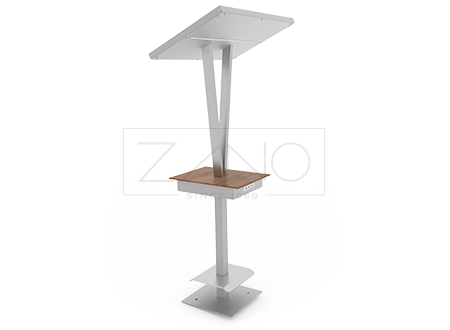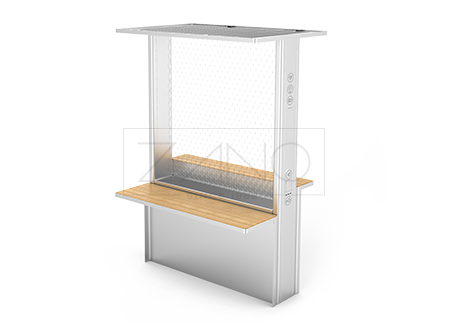
Solar charging stations
carbon steel (s235Jr)
Solar charging stations crafted from high-quality carbon steel (S235JR) represent an innovative solution in the realm of urban furniture, blending functionality with sustainability while serving the growing need for renewable energy resources in public spaces. These stations are designed not only to offer convenience in the charging of portable electronic devices but also to contribute positively to the urban landscape and environmental health.
Each solar charging station is constructed using carbon steel S235JR, a popular choice in the fabrication of heavy-duty street furniture due to its commendable strength and durability. The robust material ensures that each station remains resistant to various environmental conditions such as corrosion, UV exposure, and physical impacts. The use of carbon steel also facilitates a range of design aesthetics, from sleek, modern finishes to more rugged, industrial looks, allowing these stations to seamlessly integrate into different urban settings, be it parks, streets, campuses, or public squares.
The functionality of these solar charging stations is enhanced by their eco-friendly design. Equipped with high-efficiency solar panels, they harness solar energy to provide a reliable power source for charging mobile phones, tablets, and other portable electronic devices. This feature promotes the use of green energy, helping to reduce the carbon footprint associated with the use of non-renewable power sources. Additionally, each station often includes smart technology components such as LED lighting for nighttime illumination and possible Wi-Fi connectivity, enhancing user convenience and safety.
Moreover, the installation of these solar charging stations encourages greater outdoor activity, ensuring that public spaces are more appealing and functional. By providing a free and sustainable power source, these stations meet the needs of a modern, environmentally conscious populace, making them an essential component of contemporary urban planning and smart city initiatives. Overall, the integration of carbon steel S235JR and solar technology in these charging stations not only makes them a practical choice for public usage but also a testament to innovative, sustainable urban development.

